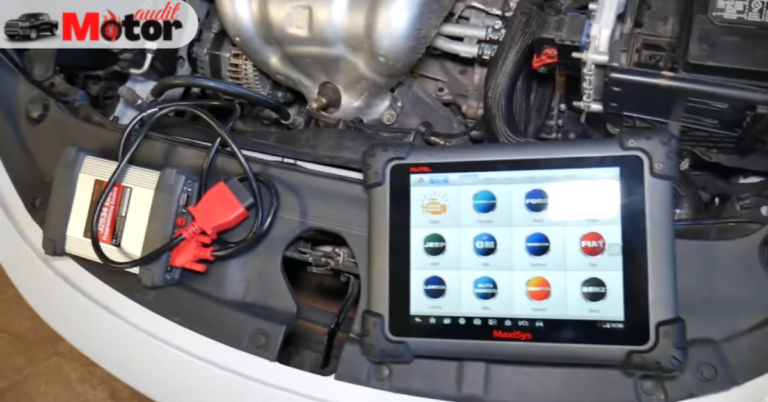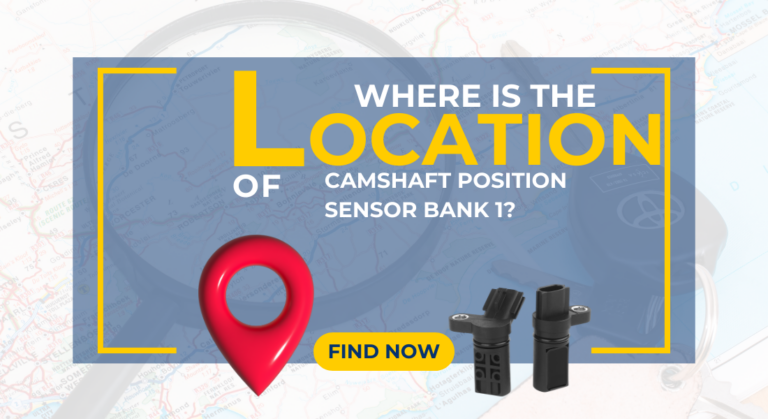How To Start A Car With A Bad Crankshaft Sensor?
Everyone who has the massive delight of owning a modernized vehicle sometimes has to go through the peril of something that tags along with its a bad crankshaft sensor.
But why is this so important? This sensor is a functional part of the internal combustion engine, which is otherwise called the crank. The crank in your car rotates the cylinders connected to the shaft.
So, what does the crankshaft do then? It gives the pistons in question varying pushes and pulls, and up and down motions, ultimately creating a smooth ride for you in the driving/passenger seats on your way home.
But when this crankshaft sensor fails to send the right signals, a lot of engines stop functioning. This is why it is essential to know how to start a car with a bad crankshaft sensor for emergencies.
Can A Bad Crankshaft Sensor Cause No Start?
Yes, among other things bad crankshaft sensor cause no start. As you learned already, the task of a crankshaft position sensor is to regulate the speed and the rotational position of the crankshaft.
For the same purpose, this sensor often has to send signals to the Engine Control Unit to make necessary adjustments where needed.
While cranking the engine, the RPM signal from the sensor goes to the Ignition Module or the PCM that controls the on and offing of the ignition coil.
In case there is a faulty signal or an absence of it, the ignition coils may not spark, thereby causing the car not to start.
Is It Possible to Bypass A Crankshaft Sensor?
Not really. You can’t bridge and bypass this sensor. Although you can cause the car to crank, it will not start.
The DME engine temperature sensor has to get the right signal in correlation with that from the camshaft sensor to eventually start the fuel-injection sequence for you to start the car.
Can You Start A Car With A Bad Crankshaft Sensor?
This actually depends on whatever symptoms are responsible for the cause of the bad crankshaft sensor.
If you are at the beginning of locating the issue, you might be able to drive the car to the mechanic till you see the stalling.
But once the sensor becomes fully compromised and it has been too late before you take action, you either cannot or should not drive your car.
Suppose, you have seen one or two misfirings in the car, or say the acceleration is a little off, would you still be able to drive the car? To some extent. For more serious problems, driving your car despite knowing the fault can cause substantial damage to the engine that could add up to the cost of repair.
How To Start A Car With A Bad Crankshaft Sensor?
In order to start a car with a bad crankshaft sensor, you have to do two things first: locate the crankshaft position and then start the car.
Locating The Position of Crankshaft Sensor
Depending on the model of the car you own, and of course the year of its manufacturing, the location of the crankshaft position sensor will differ.
As you would expect by the name, this sensor will be placed near the engine crankshaft.
So check for it to the front or back of the engine cylinder block or even to the sides of it.
In some cars, this sensor may be located near the harmonic balancer or the main pulley, as you see in Fords.
However, it may also be positioned in the transmission bell housing, as they are made to regulate the speed of the clutch flywheel.
You would be better off checking the manual for the CKP as the position can be different even when your vehicles have been produced by the same manufacturer!
Starting The Car
Now, whether you will be able to start the car or not will heavily depend on how severely the crankshaft sensor has been damaged.
If you can’t reach a mechanic at the moment but need the ride desperately, you can attempt to start the car, even with a bad crankshaft position sensor.
However, keep in mind that even after following the steps, your car may not start. All you need to do here is:
- Locate the CKP sensor in your car’s engine.
- Remove the sensor plug of the crankshaft position sensor.
- Use a starting fluid like STA-BIL for an easy, corrosion-free start.
- After the application of the fuel stabilizer, try to start your car.
- If you find the engine to start upon conducting these steps and then switch off all of a sudden, there may be an additional issue regarding your car’s fuel pump. In that case, check if you have enough fuel.
- If your car does not start at all, then it may be an issue with the spark plugs. In that circumstance, you should seek professional help, as the CKP sensor might need a replacement before you get to start your car again.
Final Words
As you saw, you may know all about how to start a car with a bad crankshaft sensor, but it may not always be possible. The best thing you can do is to detect your car and its crankshaft sensor for early signs of it failing.
When you start seeing more engine vibrations than before, a slower acceleration than you used to have, a slower start and occasional stalling, and the infamous increased engine vibrations, you are headed towards the indicators of a faulty or near-faulty CKP sensor.
The best way to start a car with such a sensor will be to apply a starting fluid to it. However, if this method is stopping the car from coming back to life, you may need a mechanic service soon.
- Read Also>> Why Car Vent Selector/ Controller Not Working?(Cause & Fix)
- Read Also>> How to Reset a Mass Air Flow Sensor? (Step By Step)
- Read Also>> Who Makes Toro Engines and Where Are Made? (Ans Explained)
- Read Also>> What Are The Symptoms of a Blown ECM Fuse? (Explained)
- Read Also>> 5.7 Hemi Bad Crankshaft Position Sensor Symptoms (Explained)


